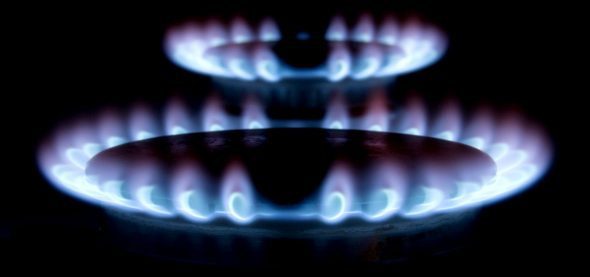After strong growth in 2015, there were only minor changes in the share of renewables last year. In fact, the most surprising thing is the change in natural gas. Craig Morris takes a look.

The numbers are not just preliminary, but partly forecast. You see, the AGEB, a group of economists and energy sector experts who tally the numbers, published them just before Christmas – before the year was even over. In total, primary energy consumption rose by 1.6 percent, the AGEB explains, due primarily to colder weather and the leap year, which added 0.3 percent of time to 2016. We don’t know the official carbon data yet, but Agora Energiewende estimates that CO2 emissions from electricity fell by 1.6 percent as coal power shrank further, while overall greenhouse gas emissions rose by 0.9 percent because too little progress is being made in the heat and transportation sectors (press release in German).
One item shows how great subsequent adjustments can be. Last year’s post on the AGEB’s preliminary data for 2015 assumed that the share of renewables had grown to 32.5% of domestic power demand. But that figure was adjusted in the summer to a mere 31.5 percent. And after only moderate growth in 2016, the new estimate now stands at 32.3 percent – less than the assumed number for last year. The chart below shows the share is renewable in total production, which includes the record level of exports. The share is renewables is lower for total generation than for domestic demand alone because Germany exports so much electricity.
Despite the standstill on the biogas market, power from bioenergy increased. Biogas units are dispatchable and hence less dependent on the weather. Solar is very dependent, and it produced less power than in 2015 even though slightly more was added. Apparently, 2016 simply wasn’t as sunny as 2015. Such fluctuations will not go away; we will have to learn to live with them in a future based largely on solar. And then there was the drop in wind power. After 70.9 TWh in 2015, onshore wind fell to 66.8 TWh last year even as new installations grew strongly.
Double adjustments
But this outcome is even worse from the viewpoint of last January, when the AGEB still put the number for wind power (onshore and off) at 85.4 TWh, a number the German wind energy association BWE still used in its most recent press release (in German). In fact, the AGEB lowered that number to 79.1 TWh last summer.
Why the reduction in the figure reported for 2015? Basically, the “live” data (which, we will remember, are just guesstimates) reported by Entso-e and used on websites such as the Agorameter and Fraunhofer’s Energy Charts only cover some 90 percent of all power generation (see this report as well). So Agora and Fraunhofer (and the AGEB) adjusted upwards to cover the gap. But then, Entso-e started including that adjustment as well – apparently without telling everyone. Agora, Fraunhofer, and the AGEB thus added their own correction to Entso-e’s, so briefly, their estimates were too high.
The figure for onshore and offshore wind at the end of 2016 is currently 79.8 TW, just one percent higher than the adjusted figure for 2015. Strong growth in offshore wind production made up for the drop on onshore wind production, largely because Bard 1, a 400 MW wind farm, was down from January to October of 2015 (report in German) but ran well in 2016.
Focus needs to shift from coal to oil & gas
Otherwise, the biggest changes in total energy supply pertained to natural gas and nuclear. The share of gas in the power sector grew partly because gas prices plummeted during the course of 2015 and remained low in 2016 (see chart 4.2 in this PDF). The AGEB also writes that demand for heat rose because the weather was colder, and gas covers around half of space heat in Germany.
Power from hard coal and lignite was down by 0.7 percent, respectively. Since the pre-crisis level of 2007, coal power has fallen by some 12.5 percent – in addition to nuclear being cut in half. At the same time, power exports have hit a new record high of 55.5 TWh, equivalent to 9 percent of total production. As Agora points out (in German), exports are rescuing coal power, which is increasingly not needed to cover domestic demand; see my article from 2013 for an explanation.
Nuclear was down for two reasons: 1) in 2015, Grafenrheinfeld was online until May, and 2) a number of nuclear plants were offline in April and May for various reasons, including security breaches and leaks. Germany currently has eight reactors in operation.
Otherwise, oil consumption remains unchanged at 34 percent of total demand, bigger than lignite and hard coal combined. Did I mention that more attention needs to be paid to the heat and transport sectors?
Source: Energy Transition. Reproduced with permission.














